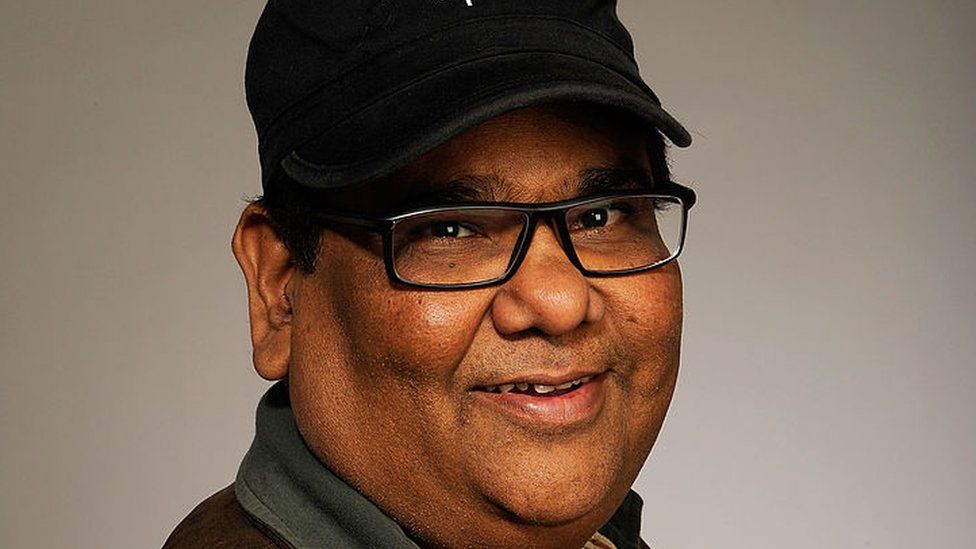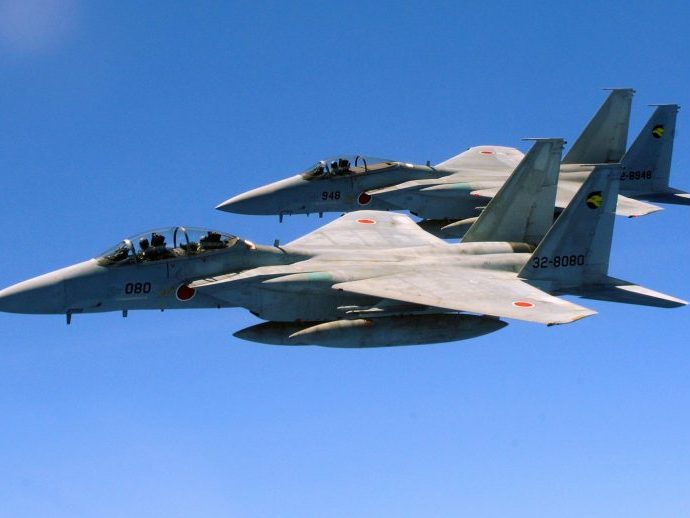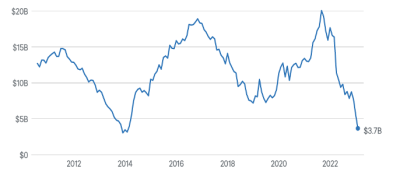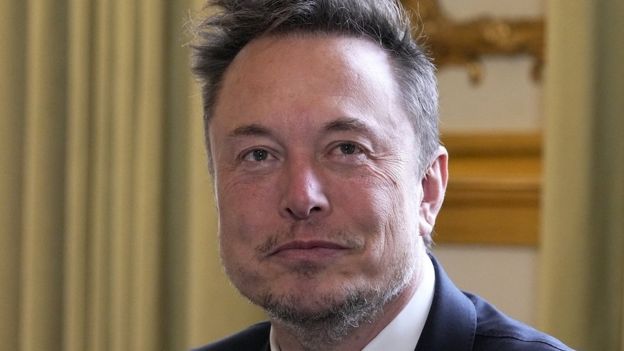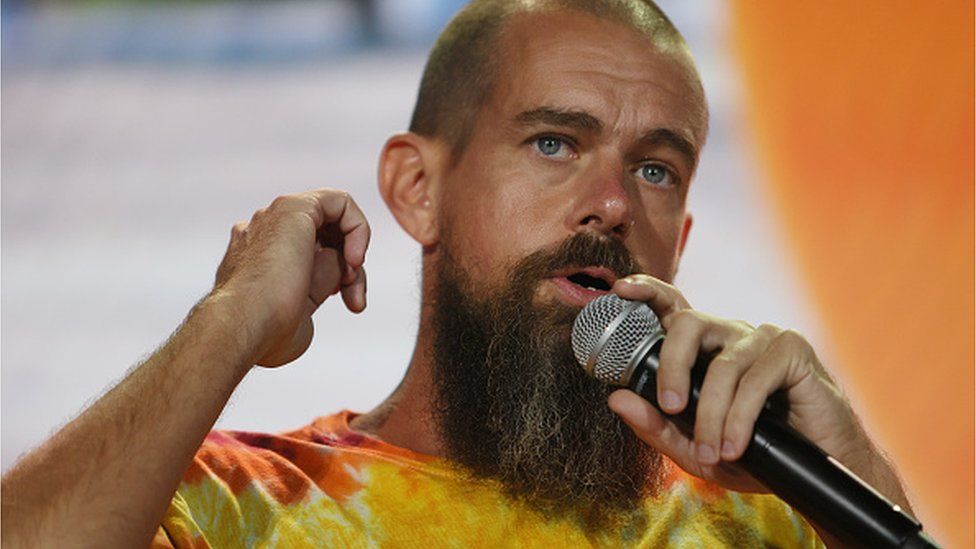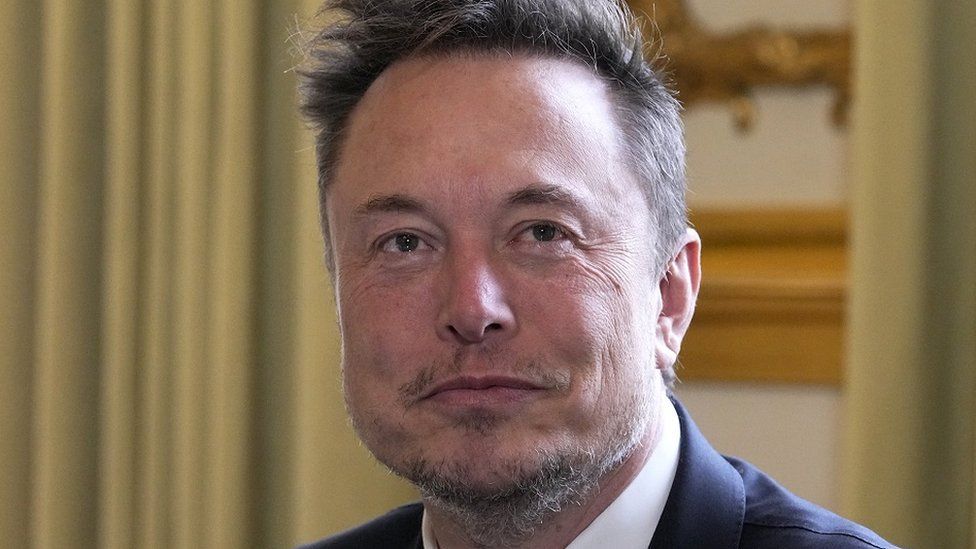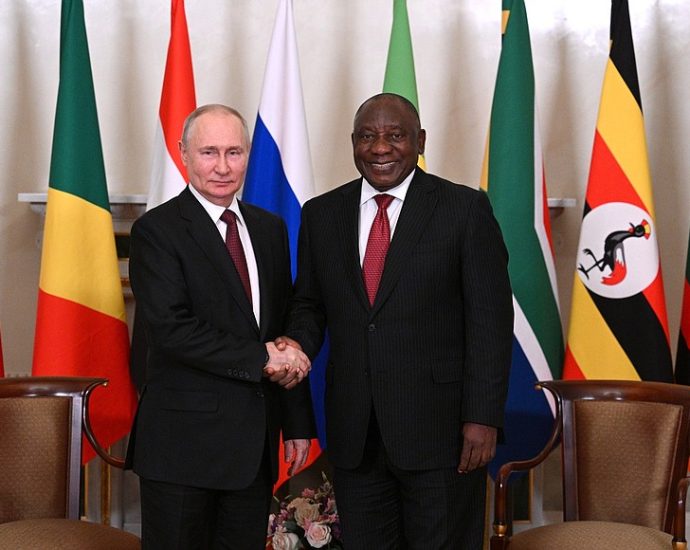Netflix CEO says US$2.5 billion Korean investment won’t exploit local talent
SEOUL Netflix co-CEO Ted Sarandos pledged on Thursday (Jun 22) that its bumper investment in South Korean content would not bypass young local talent, after calls by some lawmakers for the streaming giant to share more profits with creators. South Korea has created some of the Californian company’s biggest shows,Continue Reading
Sylvester daCunha: Tributes for creator of India’s iconic Amul girl ad
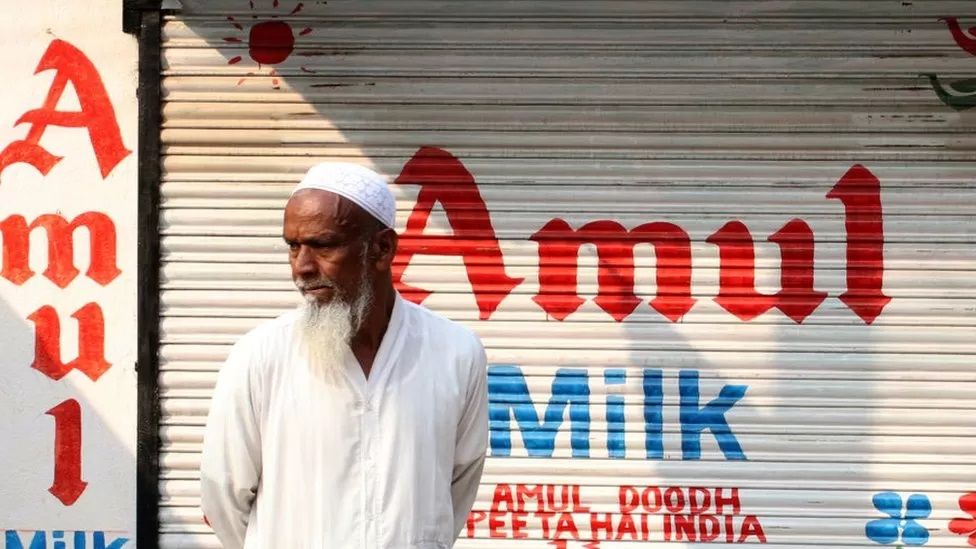 Getty Images
Getty ImagesTributes are pouring in for Indian advertising guru Sylvester daCunha who created the iconic Amul girl advert.
He died on Tuesday night in the western Indian city of Mumbai but the Amul announced his death on Wednesday.
He is credited with designing the Amul girl campaign in 1960s – a popular mascot that has since become the face of the dairy brand.
Amul, a dairy co-operative based in the western state of Gujarat, is one of the largest milk producers in the world.
On Wednesday, Jayen Mehta, Amul’s managing director tweeted about daCunha’s death, saying “the Amul family joins in mourning this sad loss”.
Pavan Singh, the brand’s general marketing manager, called daCunha a “legend of Indian advertising world” and credited him with designing “one of longest continuously running advertising campaigns in the world”.
“This campaign scaled new heights, moved seamlessly from OOH (Out-of-home advertising) to print, TV and then digital and social media, enhancing its reach and popularity across multiple generations,” he said.
Several politicians, businessmen and advertising professionals have taken to Twitter to express their grief over daCunha’s death.

Congress lawmaker Sashi Tharoor said that he was saddened by the news. “An era has passed. RIP,” he tweeted.
Trinamool Congress politician and ex-quiz master, Derek O’Brien shared a favourite Amul ad of his and said that he had “much respect and admiration” for daCunha.
The ad guru is reported to have designed the “Amul Girl” ad campaign in 1966, after his advertising agency was given the account of Amul butter.
The mascot – a mischievous girl with blue hair and a polka-dotted dress – first appeared on a few billboards in Mumbai and has since become an important part of the brand’s history.
Over the years, the Amul girl has also played the role of a social commentator. The brand’s ads featuring her have offered a tongue-in-cheek take on almost every significant event in India – be it a political scam or a sporting achievement.
Amul’s milk products are ubiquitous in India, making the brand a leader in the dairy category and one of India’s largest milk producers.
BBC News India is now on YouTube. Click here to subscribe and watch our documentaries, explainers and features.

Read more India stories from the BBC:

-
-
28 August 2022
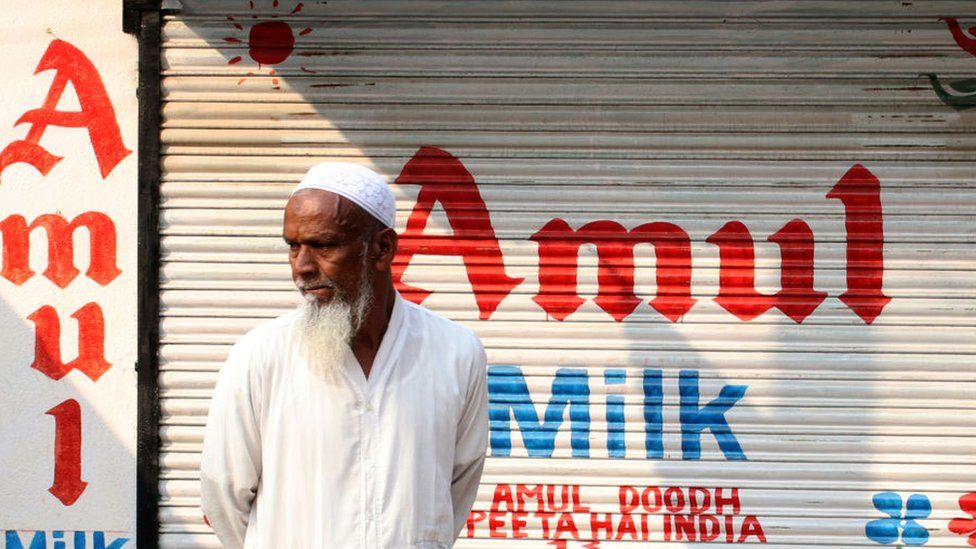
-
Indonesia looking to Japan for old F-15 engine deal
Japan is considering exporting surplus jet engines from its older fighters to Indonesia, sales that would boost Tokyo’s strategic influence and revenue in the region while also bolstering Jakarta’s military modernization efforts.
This month, The Japan News reported that Tokyo may ship used F-15 engines from its Japan Air Self-Defense Force (JASDF) to help power the Indonesian Air Force’s (IDAF) aging F-16 fighters.
The report notes that the two governments have previously signed an agreement regarding the transfer of defense equipment and technologies, paving the way for the F-15 engine deal. The report also says that Japan’s 100 older F-15s will not be used in the future due to modernization difficulties.
The Japan News notes that while Japan’s Three Principles on Transfer of Defense Equipment and Technology currently limit the transfer of defense equipment for “rescue, transportation, vigilance, surveillance or minesweeping,” parts are not included in the guidelines.
It notes that exporting parts is permitted, citing the case of international joint development with parts exported to the US in the past. It also mentions that the Japanese government will present the policy at a planned meeting between the Liberal Democratic Party (LDP) and coalition partner Komeito.
The report also says that some in the LDP call for revising the current guidelines to allow for the active export of parts alongside other equipment. It also says that Japan hopes to improve bilateral relations with Indonesia and create a favorable regional security environment.
Japan’s used F-15 engines are a valuable resource that could be the foundation of practical cooperation between Indonesia and many other countries that operate F-15s and F-16s.
Ashish Dangwal notes in Eurasian Times that Japan may have to dispose of 200 viable Pratt &Whitney F100 turbofan engines extracted from decommissioned twin-engine JASDF F-15s, with exporting them to other countries seen as a potential solution.
Dangwal notes that Japan, in line with its 2022 Medium-Term Defense Program, aims to replace 100 JASDF F-15s with F-35s within the next decade at a rate of 10 aircraft a year.

He notes that 200 engines at a rate of 20 a year may be available for export or reprocessing for 16 countries that have expressed interest, including several European countries, Indonesia, Saudi Arabia, South Korea and Taiwan.
Dangwal also mentions that IHI Corporation in Japan manufactures the F100 under license, which means Japanese firms will be in charge of maintenance and support for these engines should they be transferred to third parties. That, Dangwal notes, would have positive implications for the Japanese defense and aerospace industry.
While Japan has no shortage of high-tech qualifications for jet engine manufacturing and maintenance, it may have yet to re-learn the bureaucracy, process and business of arms exports, as it has not formally engaged in such since the de facto 1967 Japanese Arms Export Ban.
In the case of Indonesia, Prashanth Parameswaran notes in an April 2020 article in The Diplomat that the IDAF has been looking to boost its capabilities, with officials frequently noting that the force doesn’t have sufficient aircraft to cover its airspace and meet its evolving security needs, including vis-à-vis China.
Stephen Burgess mentions in an April 2023 Journal of Indo-Pacific Affairs article that the IDAF operates a hodgepodge fighter force of 49 jets made in the US and Russia, including 33 F-16s, 11 Su-30s, and five Su-27s. He notes that the Su-30 is the IDAF’s primary fighter.
At the same time, the older F-16s are less capable, have limited upgrade potential and can only be effective when integrated into an air defense strategy.
Indonesia has taken steps to acquire newer aircraft, though with mixed results. Asia Times reported on Indonesia’s recent purchase of a dozen 26-year-old ex-Qatari Mirage 2000-5 jets this month as the country struggles to mobilize the resources needed to acquire newer, pricier aircraft.
The Mirages will be stationed at Pontianak’s Supadio airbase, replacing the much older Northop F5s that have long been withdrawn from service and will be used as a training and familiarization platform pending the delivery of 42 Dassault Rafale jets from France.
Indonesia planned to purchase Russia’s Su-35 but was dissuaded by US threats to impose the Countering America’s Adversaries Through Sanctions Act (CAATSA), which targets Russia, Iran and North Korea.

Asia Times reported in February 2022 that the US offered 36 F-15EX fighters to Indonesia as an alternative to the Russian fighters, but their high per-unit price and possible US restrictions on the jets’ avionics and weapons systems caused Jakarta to opt instead for the Rafales.
However, budget limitations and shifting priorities may limit the number of Rafales Jakarta ultimately buys.
Significantly, Indonesia is also a stakeholder in South Korea’s KF-21 Boramae fighter project. However, Asia Times noted in June 2022 that payment issues on Indonesia’s side have hindered its participation.
The US may also be reluctant to share critical fighter technologies with South Korea, as the latter is known for making upgraded knockoffs of US military equipment, potentially undercutting US arms sales.
Indonesia may thus be forced to keep its aging F-16s in the air out of military and financial necessity. Military Watch noted in 2019 that while the F-16’s performance may not meet the IDAF’s modernization requirements, they are valuable in paying off the US defense sector and warding off possible US sanctions for its defense dealings with Russia.
Keeping the F-16 in service with Japanese and US assistance might achieve that political aim and on a limited budget. Indonesia’s issues in modernizing its air force underscore the complicated nature of its defense partnerships.
That hedging is in line with Indonesia’s staunchly independent foreign policy, which eschews over-reliance on any one partner to avoid getting dragged into a regional conflict or being used as a battleground by external powers, but is becoming more difficult to balance in the current heated geopolitical environment.
Unraveling Pakistanâs economic crisis
Pakistan is on the brink of an economic meltdown that threatens the nation’s fragile financial credibility and paves the way for potential political, humanitarian, and social upheaval.
Marked by widespread civil-disobedience movements, dwindling foreign-exchange reserves, soaring prices of essential commodities such as wheat, onions, milk and meat, persistent power blackouts, and an upcoming election, Pakistan faces a perfect storm of challenges.
Prime Minister Shehbaz Sharif’s government is grappling not only with internal political turmoil resulting from the ousting of the administration led by Imran Khan but also external pressures from intergovernmental agencies such as the International Monetary Fund (IMF).
A struggling economy
The disruptions caused by the pandemic had a severe impact on economies worldwide, including Pakistan. Supply-chain disruptions affected various sectors, from retail to automobile manufacturing.
The resurgence of Covid-19 in China, the world’s second-largest economy and a significant player in global value chains across South and Southeast Asia, has added to the spillover effects on the global economy.
Consequently, by February, Pakistan’s foreign-exchange reserves hit an unprecedented low of US$3.19 billion, enough to cover only two weeks of import expenses, falling significantly short of the IMF’s mandated three-month import cover.
The situation is further aggravated by Pakistan’s daunting task of repaying a massive debt of $73 billion by 2025, amid a volatile political landscape and uncertain reliability of lending nations. The country’s total debt burden of $126 billion consists mainly of external loans obtained from China and Saudi Arabia.
Figure 1: Trends in Pakistan’s Foreign Reserves

Security concerns stemming from violent separatist groups in Sindh and Balochistan have strained the strong relationship between Pakistan and China, possibly causing the latter to suspend its developmental initiatives under the Belt and Road Initiative (BRI) and the China-Pakistan Economic Corridor (CPEC).
This further hurts Pakistan’s international reputation, as it is already considered a breeding ground for terrorism, hampering its prospects for foreign investment and assistance.
Saudi Arabia, on the other hand, has been a relatively stable supporter, except for occasional demands for immediate debt repayment.
While the relationship between the Saudi royal family and Pakistan has evolved into a strategic partnership, with Pakistan strengthening Saudi Arabia’s military and Riyadh making critical investments in Pakistan, the future of this friendship is undeniably based on geopolitical and religious interests.
Endless debt
Pakistan’s historical and cultural ties with its key allies, China and Saudi Arabia, run deep despite present circumstances suggesting otherwise.
China’s involvement in Pakistan’s development and trade dates back to the 1960s when Beijing extended interest-free credit of around $85 million (equivalent to several billion dollars today) for technological and infrastructural projects. Bilateral trade agreements were also signed to accelerate industrialization in Pakistan after the Sino-Indian war.
China and its commercial banks account for about 30% of Pakistan’s total external debt, exceeding $100 billion. This proportion surpasses the financial support received by debt-ridden Sri Lanka from China, which accounts for 20% of its total public external debt.
Moreover, the recent disbursement of an additional $700 million from the China Development Bank (CDB) in early 2023 further amplifies Pakistan’s burden of external debt obligations this year.
Figure 2: Pakistan’s Total External Debt (in US$ million) from 2006 to 2022

Pakistan’s chances of defaulting on its foreign obligations this year are more imminent than ever. The nation’s dollar-denominated bonds have reached an all time low. This problem is exacerbated by the country’s low foreign-exchange reserves and upcoming repayments amounting to $7 billion in the coming months.
Additionally, negotiations with the IMF for a bailout have been slow and uncertain, leading to failure to avert a debt default and stabilizing sharply declining bond prices, which have fallen by about 60%.
Pakistan’s reliance on external loans, primarily from China and Saudi Arabia, has further compounded its economic challenges.
While these alliances have historically been strong, recent security concerns in such regions as Sindh and Balochistan have strained the relationship with China. The threat posed by violent separatist groups not only endangers the safety of Chinese nationals but also jeopardizes the future of key developmental initiatives under the BRI and CPEC.
Granting permission for Chinese security firms to operate within Pakistan would come at the expense of the Pakistan Army’s ability to protect foreign nationals.
On the other hand, Saudi Arabia has been a long-standing partner for Pakistan, providing critical support in various sectors. However, occasional demands for immediate debt repayment add to Pakistan’s financial strain, making it challenging to maintain a stable economic trajectory.
In conclusion, Pakistan finds itself at a critical juncture, with its economy on the verge of collapse. The country’s fragile financial credibility is at stake, and the consequences could be far-reaching, affecting not only the economy but also the political, humanitarian, and social fabric of the nation.
It is imperative for the government to address the internal political turmoil and effectively navigate the external pressures from intergovernmental agencies.
Additionally, a thorough evaluation of Pakistan’s foreign partnerships, particularly with China and Saudi Arabia, is necessary to determine their viability and ensure a sustainable path forward.
A more detailed article by this author can be found here: Debt ad Infinitum: Pakistan’s Macroeconomic Catastrophe.
Beijing braces for blistering hot weather as heatwaves return
BEIJING: Beijing on Thursday (Jun 22) issued its second-most severe warning for high temperatures that are expected to persist through the weekend as northern China battled another round of heatwaves in a week. The Chinese capital raised an orange alert, warning temperatures could rise as high as 39 degrees CelsiusContinue Reading
Beijing breaches 40°C for first time in 9 years
BEIJING: The temperature in Beijing soared above 40 degrees Celsius on Thursday (Jun 22) for the first time since 2014 as the Chinese capital warned of blistering hot weather through the weekend with the return of heatwaves that scorched northern China a week earlier. A weather station on the southernContinue Reading
Elon Musk: Australia issues legal warning to Twitter over online hate
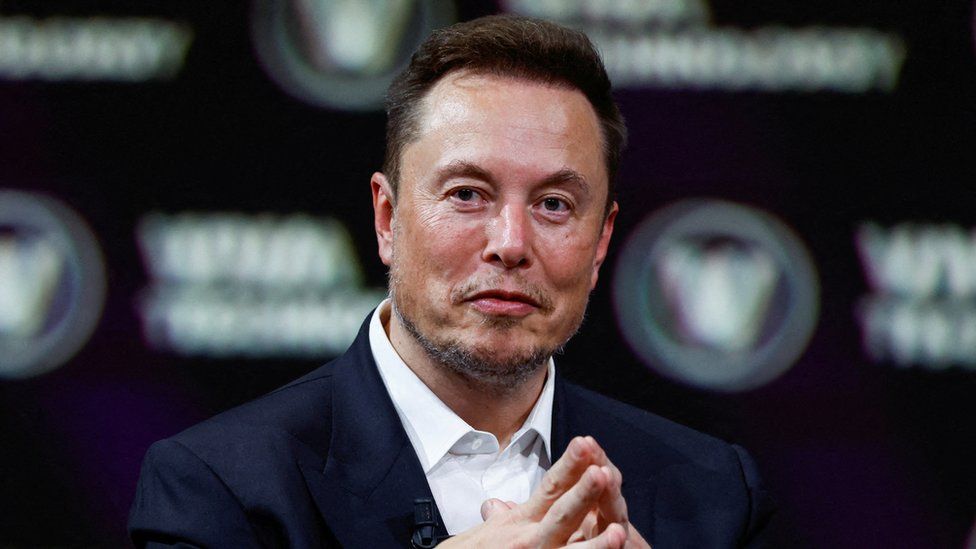 Reuters
ReutersAustralia’s cyber regulator has called on Twitter, which is owned by multi-billionaire Elon Musk, to explain its handling of online hate.
The country’s online safety commissioner says Twitter has become the most complained about platform.
The demand builds on a campaign by the watchdog to make the social media company more accountable.
Mr Musk bought the firm last year for $44bn (A$64bn; £34.5bn) and promised to protect free speech on the platform.
A legal notice has been sent to Twitter demanding an explanation after one-third of all complaints received about online hate concerned the platform, Julie Inman Grant said.
That is even though Twitter has far fewer users than TikTok, Facebook and Instagram.
“Twitter appears to have dropped the ball on tackling hate,” she said.
“We are also aware of reports that the reinstatement of some of these previously banned accounts has emboldened extreme polarisers, peddlers of outrage and hate, including neo-Nazis both in Australia and overseas,” she added.
Twitter did not provide a statement on the announcement when contacted by the BBC for comment.
Earlier this month Ella Irwin, Twitter’s second head of trust and safety under Mr Musk’s ownership resigned. Her predecessor, Yoel Roth, left in November 2022 – a month after Mr Musk took control.
The head of trust and safety is tasked with content moderation, a topic that has come under the spotlight since the takeover.
Although Ms Irwin has not publicly said why she left Twitter, her exit came a day after Mr Musk publicly criticised a content moderation decision.
He called the decision to limit the visibility of a video over allegations of misgendering, “a mistake by many people at Twitter”.
“Whether or not you agree with using someone’s preferred pronouns, not doing so is at most rude and certainly breaks no laws,” he wrote.
Just days later, Linda Yaccarino, the former head of advertising at NBCUniversal, took up her role as Twitter’s chief executive, replacing Mr Musk.
Ms Irwin’s resignation also came a week after the social media platform pulled out of the European Union’s voluntary code to fight disinformation.
Since buying Twitter, Mr Musk has cut about 75% of its employees, including teams charged with tracking abuse, and changed how the company’s verification process.
Meanwhile, advertisers have left in large numbers.
In her former role Ms Yaccarino is credited with helping to steer NBCUniversal through the upheaval caused by technology firms, overhauling advertising sales, and driving industry-wide debates about data gaps as audiences migrate online.
Related Topics
-
-
7 days ago

-
Okta Appoints Stephanie Barnett as VP of Presales for Asia Pacific & Japan
She will be based in Singapore
She has 15 years of experience in the tech industry
Okta, an independent identity provider, today announced that it had appointed tech industry executive Stephanie Barnett (pic) as its Vice President of Presales for the Asia-Pacific & Japan (APJ) region.
Ben Goodman, Okta’s Senior Vice President and General Manager…Continue Reading
How both Ukraine peace plans fall short

Step back for a moment and ponder the delegation of African leaders that traveled to Kiev and Moscow on a peace mission.
Here were four African heads of state and representatives from countries on all corners of the continent making their way to the belligerents of a European war. Nothing could better demonstrate how Russia’s “special military operation,” a year on, has had global consequences.
Such consequences have led to two public peace plans, and perhaps other private efforts. One came from China and the other from a coalition representing a continent. Neither has been successful, nor come anywhere close to garnering support among the parties to the conflict.
What is demonstrated by the discussions held by African leaders, first with Kiev and then Moscow, is that the two sides remain very far apart. But it is not merely war that separates them: Even what constitutes “peace” remains elusive.
Both the Chinese and African peace plans have floundered because the very nature of what would constitute “peace” is contested. As the war continues, Russia has more and more options for a peace deal, while Ukraine only has one.
The African delegation, led by South African President Cyril Ramaphosa, was deeply consequential. Ramaphosa was there with the presidents of three other countries and the prime minister of Egypt.
In terms of Africans seeking to take charge of a conflict beyond their borders that has nonetheless affected the continent severely, it was politically powerful. But the actual peace plan, like the Chinese plan before it, was disappointing, and turned primarily on confidence-building measures by both sides.
Both Presidents Volodymyr Zelensky and Vladimir Putin raised major objections to it.
Kiev’s maximalist stance
The first major objection raised by Zelensky is one he has reiterated before, but which represents a hardening of the position from the start of the conflict. Zelensky said peace talks would only be possible once Russia had withdrawn from all of Ukrainian territory.
That same formulation has been used in the past, and is often understood to mean not merely recently occupied territories in the east of Ukraine, but also Crimea, which Russia occupied and annexed in 2014.
That position is exactly what one would expect of a wartime government, especially one that has been pushed into a war not of its choosing.
But it is also a maximalist position, one which, followed to its logical conclusion, means not only total Russian withdrawal, but sufficient guarantees, either from Moscow or from Europe, that no conflict would happen again. For Kiev, peace would mean not merely the return of its territory, but a changed Russia.
But “peace” for Russia is a much more amorphous term. Moscow already has frozen conflicts in at least three neighboring countries, Georgia, Azerbaijan and Moldova. It can stand one more.
Frozen conflict
Another option is a “forever war.” This is the scenario Ukraine and the West perhaps fear most.
A frozen conflict would keep Kiev forever in a state of military readiness, unable to dedicate its resources to properly rebuilding. But a forever war would constantly sap Ukraine’s more limited resources, and severely test Western resolve to keep arming the country – especially as elections swept over Western nations, bringing to power new, less invested leaders.
Such a scenario is possible, even likely, because it favors Russia’s military heft. A startling analysis by The Economist last month suggested Russia was only using around 3% of its GDP on the Ukraine war – less than the United States used in the Korean War, which lasted for three years, and not much more than the US spent in Vietnam – which lasted for 20. Time is firmly on Russia’s side.
And that is the essential gap between the two – the nature of the peace they seek. It’s something no peace plan has yet addressed.
Ukraine wants – indeed needs – a permanent peace. Nothing less can be countenanced after the astonishing destruction of the past year of war. It is politically impossible for Kiev to have gone through so much pain and loss, only for the war to pause and resume again in a year or two or five.
But for Russia, a permanent peace isn’t necessary. A piecemeal peace will do.
Russia can make the grain export deal recurring, or work out a prisoner swap. It can stop targeting the Ukrainian capital or freeze the conflict west of the Dnieper River. It could call a truce everywhere but in the occupied and contested areas. All of these are potential versions of “peace,” and all of them are up for negotiation.
The Africa delegation won’t be the last of leaders far from Europe seeking an end to the conflict. Ukraine’s much-vaunted counteroffensive is stuttering. It is hard to see a clear victory for either side even at the end of this year.
If the war doesn’t end, then some version of peace must prevail. But which of the multiple versions of peace will it be – and will any of them be acceptable to a battered and war-weary Ukraine?
This article was provided by Syndication Bureau, which holds copyright.
Faisal Al Yafai is currently writing a book on the Middle East and is a frequent commentator on international TV news networks. He has worked for news outlets such as The Guardian and the BBC, and reported on the Middle East, Eastern Europe, Asia and Africa. Follow him on Twitter @FaisalAlYafai.
Singaporean missing after falling off ship in US waters; search efforts suspended after 15 hours
SINGAPORE: A 15-hour search for a Singaporean man who fell from a ship into US waters was suspended on Wednesday night (Jun 21). Mr Muhammad Furqan Mohamed Rashid was reported missing on Tuesday night after he fell overboard a bulk carrier vessel 22km off the coast of Point Conception, California, accordingContinue Reading


